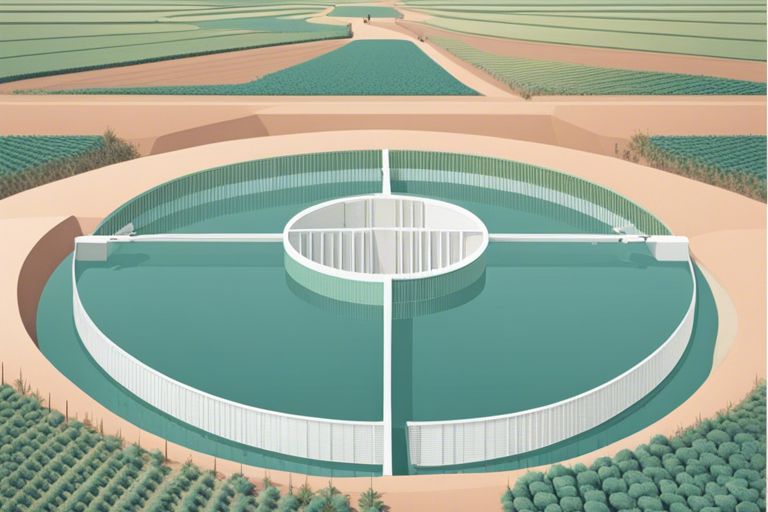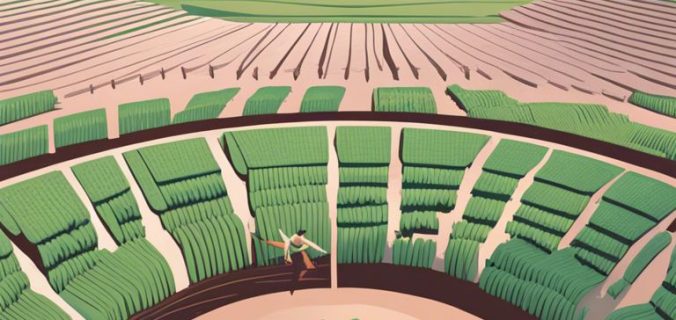Farming in the circular economy is pivotal in reducing the water footprint of cotton production. Cotton, a staple in the textile industry, is notorious for its excessive water usage. This article explores into sustainable practices that aim to minimize water consumption in cotton farming, offering insights into how the circular economy can play a crucial role in environmental conservation and resource efficiency.
Key Takeaways:
- Cotton farming in the circular economy: Embracing circular economy principles in cotton production can help reduce waste and maximize the use of resources.
- Reducing water footprint: Implementing sustainable water management practices in cotton farming is crucial for conserving water resources and lowering the environmental impact of cotton production.
- Embracing innovation: Adoption of innovative technologies and practices, such as drip irrigation and precision agriculture, can play a significant role in reducing water consumption in cotton farming.
The Impact of Cotton Farming on Water Resources
Water Usage in Conventional Cotton Production
One of the biggest challenges in conventional cotton farming is excessive water usage. Cotton is a water-intensive crop, often requiring large amounts of irrigation in regions where water resources are already scarce.
The Environmental Consequences of Excessive Water Use
Production of cotton through conventional methods often leads to the depletion of freshwater sources, soil degradation, and water pollution from pesticides and fertilizers. This not only threatens local ecosystems but also impacts the livelihoods of communities relying on these resources.
Conventional cotton farming practices contribute to water scarcity, affecting both local communities and ecosystems. The irrigation of cotton crops can lead to depletion of groundwater reserves and disruption of aquatic habitats, creating a ripple effect on surrounding environments.

Principles of the Circular Economy in Cotton Farming
Redefining Cotton Production: A Shift towards Sustainability
Now, Cotton farming is undergoing a transformation towards sustainability in the circular economy. This shift involves redefining traditional practices to reduce environmental impact and prioritize long-term sustainability over short-term gains.
Implementing Regenerative Practices in Cotton Farming
Circular practices in cotton farming involve implementing regenerative practices to restore and enhance the health of the soil, reduce water consumption, and promote biodiversity. This approach aims to create a sustainable system that regenerates the ecosystem rather than depleting its resources.
This method focuses on soil health, water conservation, and biodiversity to create a more resilient and sustainable cotton farming system that benefits both the environment and the farmers in the long run.
Strategies for Reducing Water Footprint in Cotton Production
Despite the water-intensive nature of cotton production, there are strategies that can be implemented to reduce the water footprint in cotton farming. For a comprehensive guide to reducing the water footprint of cotton cultivation, you can refer to the guide to reducing the water footprint of cotton cultivation.
Precision Irrigation Systems and Water Harvesting
To minimize water usage in cotton farming, implementing precision irrigation systems and water harvesting techniques can significantly reduce the overall water footprint of cotton production.
Crop Rotation and Soil Conservation Techniques
Footprint Crop rotation and soil conservation techniques play a crucial role in reducing water usage and improving soil health in cotton farming. By rotating crops and implementing soil conservation practices, such as cover cropping and reduced tillage, farmers can enhance water retention in the soil and decrease the need for irrigation.
Water conservation techniques like mulching and conservation tillage help in reducing evaporation and retaining moisture in the soil, leading to overall water savings and a reduced environmental impact of cotton production.
Summing up
With this in mind, embracing circular economy practices in cotton farming is crucial to reducing the water footprint in production. By implementing innovative techniques like precision agriculture, drip irrigation, and water recycling, farmers can conserve water resources, promote sustainable farming practices, and mitigate the environmental impact of cotton cultivation. Moving towards a more sustainable approach not only benefits the environment but also supports the long-term viability of the cotton industry.
FAQ
Q: What is the concept of the Circular Economy in Cotton Farming?
A: The Circular Economy in Cotton Farming refers to an agricultural system that aims to reduce waste and promote sustainability by recycling resources, such as water and nutrients, within the cotton production cycle.
Q: How does Cotton Farming in the Circular Economy help in reducing the water footprint?
A: By implementing practices such as drip irrigation, rainwater harvesting, and water recycling, Cotton Farming in the Circular Economy minimizes water usage, thus reducing the water footprint associated with cotton production.
Q: What are some strategies that can be employed to enhance water efficiency in Cotton Farming?
A: Some strategies to enhance water efficiency in Cotton Farming include using precision irrigation techniques, adopting soil moisture monitoring systems, implementing cover cropping to reduce evaporation, and investing in water-saving technologies.

